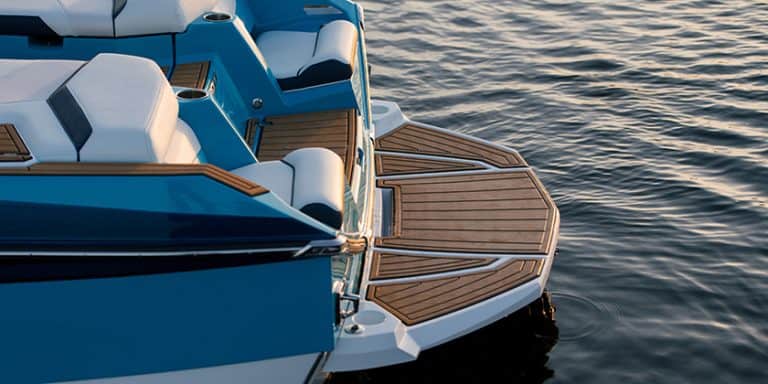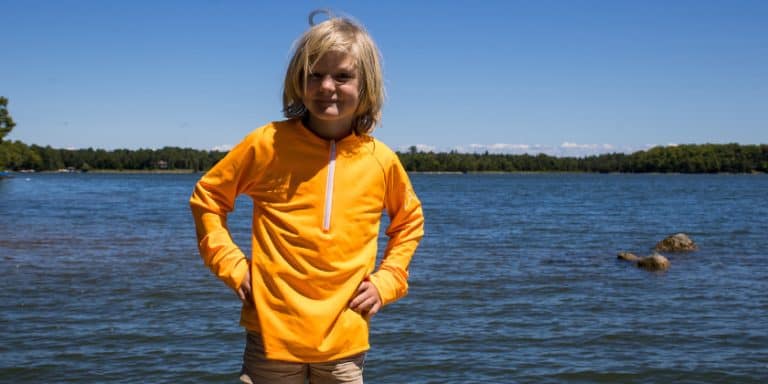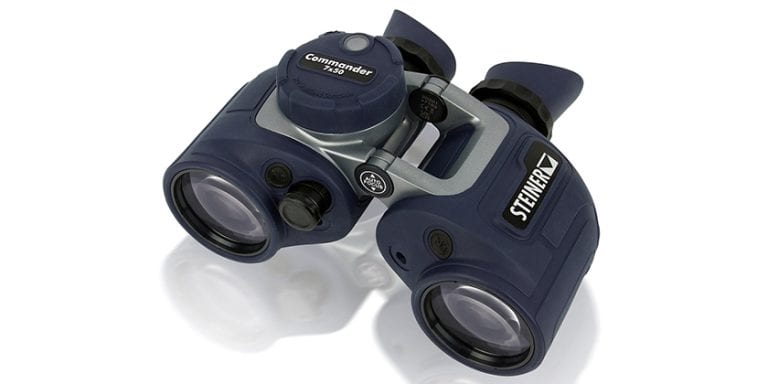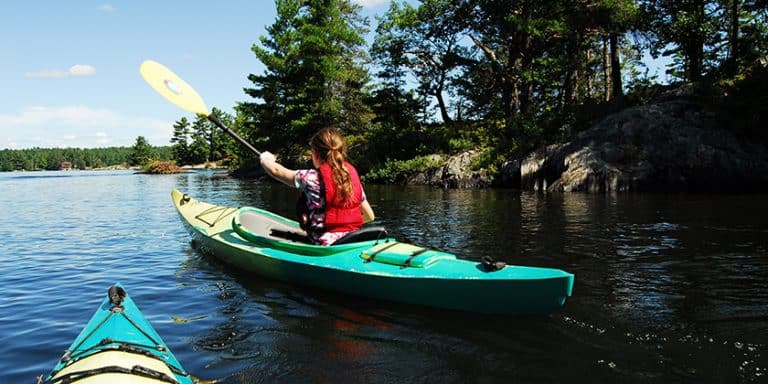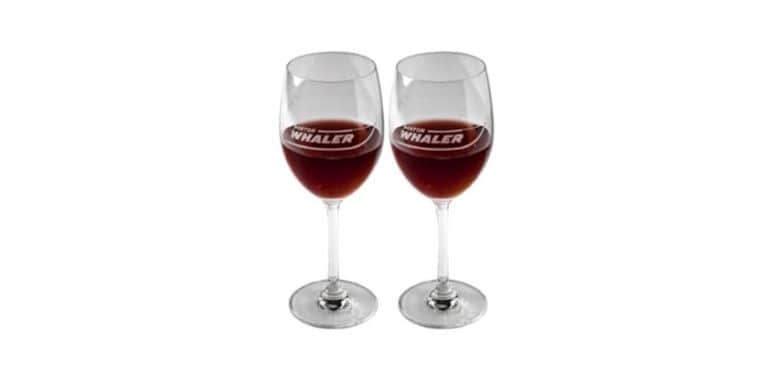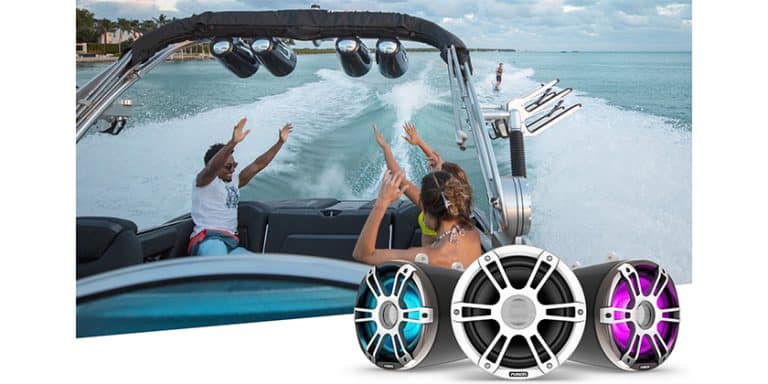Nautical Fashions: Look Good – Feel Great

By Kris Hughes
Henri Lloyd Jerry/Henri Lloyd Wave Jacket – Men’s and Women’s
From the Top…
Starting from the top. If you partake in any winter activities, you have probably heard that your head is the body’s single biggest source of heat loss. This is a myth; your head isn’t the single biggest point of heat loss, butyour head and face are more sensitive to temperature than other parts of your body, so a toque on a cold day can make a huge difference in your comfort level.
Being physically comfortable is important. It makes your outdoor experiences more enjoyable and probably more successful, too. Obviously, a boating experience is more enjoyable when you are warm and dry than when you are cold and wet. Being comfortable on the water goes beyond just planning for cold and wet conditions though. What about when it is warm and sunny? Marine apparel aims to solve these problems and keep you comfortable, regardless of the conditions.
 Gill Lydia Kerr/ Race Collection_Race Long Sleeve T-Shirt
Gill Lydia Kerr/ Race Collection_Race Long Sleeve T-Shirt
Eye Protection
Another myth is that water reflects more light than land, so sunglasses are more important on the water. Yes, you should wear sunglasses, our eyes are very sensitive to UV radiation, but water doesn’t necessarily reflect more light than other environments, such as a ski hill. Light reflected off of water is polarized though, so a good pair of polarized sunglasses will help reduce glare when you are out boating. Personally, I find sunglass retainers are a must as well. For a reason yet to be explained by science, water is a magnet for good sunglasses and the deeper the water, the stronger the pull!
Protecting your eyes from the sun is one thing, but what about the rest of your body? Not all clothing provides significant UV protection. Light weight and shear fabrics that are not designed to protect you from the sun, probably won’t. Heavy weight fabrics tend to provide lots of sun protection; jeans, for instance, provide a great UV barrier. However, jeans are pretty hot in the sun and, as I’ll discuss later, cannot be worn underneath ‘waterproofs.’ So, light weight UV shirts and shorts provide UV protection while at the same time being light and comfortable to wear in hot weather.

Helly Hansen, Most of us aren’t out in conditions like these, we probably don’t need these clothes either
But what if it’s the weekend, or our day off, and conditions aren’t ideal? What are we to do? Certainly not stay on land, we have had all winter to stay on land. May as well throw on some good gear and head out. For those cold and wet days on the water, “dress in layers” is the most common and best advice given to make sure you stay comfortable. The idea is that you have two to three layers of clothing, each layer with a specific role, but all working together to keep you warm in cold and wet environments.
Layers
First you have a base layer, this fabric wicks water (perspiration) away from your body. Second, you have a mid-layer that continues to wick water away from your body and also provides a layer of insulation to help trap warm air next to your body. In the right conditions, your base and mid-layers can also be worn as excellent standalone pieces. Then you have a final outer layer which is waterproof, windproof, and ‘breathable.’ It is designed to protect you from the environment and also let water vapour trapped between your skin and jacket escape.
 Mustang
Mustang
The number one goal of layering: Stay dry. Water has much higher heat conductivity than air, so wet clothing is going to suck heat out of your body much faster than dry clothing. Every layer worn should absorb just limited amounts of, or no, water.
This is why cotton should be avoided. In fact, anytime you are trying to stay warm, cotton is probably a bad idea. In the layering system, it is a total no-go. Cotton absorbs up to 27 times its weight in water. All that water next to your skin sucks heat from your body, rapidly. Even in moderate conditions this will not work; the cotton will absorb your sweat and it won’t evaporate quickly, leaving you cold and damp.
Unlike cotton, a good base layer will wick water quickly off of the surface of your skin. Some base layers also have another important feature: UV protection. The line between sun shirt and base layer is not always clear. A number of fully synthetic sun shirts will also act as a good base layer while also making sure you don’t spend the week after a big trip covering your back in aloe.

Helly Hansen
One of the great things about base layers and sun shirts is that they are available in a wide variety of colours and styles. Don’t settle for something that looks drab or doesn’t fit. There are so many options out there, including ones designed to look like streetwear, only with technical performance.
On top of your base layer is a mid-layer. It traps warm air next to your body and lets water vapour from the base layer below pass through it. Some higher-end mid-layers are also windproof. This is an important consideration because even a little bit of wind can blow all the trapped warm air right out of a traditional fleece. Mid-layers are sometimes designed with layering in mind and will intentionally be cut tighter with higher armpits to make it more comfortable to put a jacket on over top.
Waterproof Yet Breathable
Finally, you have your outer layer. This includes your jacket and pants, which should be made from a fabric that is both waterproof and breathable. Outer layers have three purposes: One – they block the wind; two – they are waterproof, keeping you and your inner layers dry; and three – they breathe, letting water vapour trapped under the garment escape into the environment.
 The Gul CODE ZERO Windproof Fleece is a wind proof mid-layer with the look of a traditional fleece; a versatile piece that can keep you warm in a variety of situations
The Gul CODE ZERO Windproof Fleece is a wind proof mid-layer with the look of a traditional fleece; a versatile piece that can keep you warm in a variety of situations
The most interesting thing about outer layers is that they are made from waterproof and breathable fabrics. Perhaps the most well-known of these fabrics is Gore-Tex, made from ePTFE, or expanded polytetrafluoroethylene. Gore-Tex is a class of fabric known as microporous. Since the invention of ePTFE,a number of other microporous class fabrics with similar properties have been developed, which are made out of different materials. Most high-end jackets will use microporous technology, though not all of them will use Gore-Tex. Gone are the days where Gore-Tex was the only name in town. Modern fabrics often include additional technology on top of the microporous membrane to improve performance.
What does it mean for a fabric to be both waterproof and breathable? Waterproofness is pretty simple and is determined by how much hydrostatic pressure a fabric can resist; resist enough hydrostatic pressure and the fabric is considered waterproof. Higher-end waterproof fabrics can resist significantly more pressure than entry level ones.
 Henri Lloyd Traverse Fleece Jacket; a technical fleece mid-layer with a stylish knit look
Henri Lloyd Traverse Fleece Jacket; a technical fleece mid-layer with a stylish knit look
The second part of the equation is breathability, or a fabric’s ability to expel water vapour. How a microporous fabric breathes is pretty ingenious. The fabric is filled with tiny voids, or pores, and is comprised mostly of air. These pores are large enough for water vapour to escape but small enough that liquid water from the environment can’t get through. Water vapour is then pulled from one side of the membrane to the other by the humidity gradient until the humidity on the inside of the jacket is the same as the environment.
Determining the breathability of a given garment is a complex consideration; real world conditions have a significant effect on breathability, and those conditions do not affect all fabrics equally. A couple of factors which have been shown to effect breathability are wind and rain. Garments breathe better in windy conditions than in dry conditions and better in dry conditions than in rain. Additionally, a jacket which has ‘wetted out’ is not going to breathe as well as one that is still beading water. Furthermore, most garments will stop being breathable after prolonged exposure to torrential rain.

Helly Hansen AEGIR H2FLOW JACKET, a windproof mid-layer
It is difficult to avoid prolonged exposure to torrential rain, but it is possible to reduce the likelihood your jacket will ‘wet out.’ Wetting out is when the surface of your jacket stops beading water and instead absorbs water. This is not the same as the jacket leaking, the waterproof membrane is fragile so it is inside of the garment and the surface of the jacket is protecting the membrane. The beading of water on a new jacket is the result of a coating called DWR, which will eventually wear off and your jacket will start to wet out. DWR can be reapplied and it is good practice to reapply it at least once a year.
For years, marine outerwear was dominated by a style of jacket colloquially known as ‘foulies.’ This style is defined by jackets made of bright colours with high collars, long bodies, and a look that screams ‘sailing!’ This style still exists, and often gets marketed as ‘offshore’ gear. It is very distinctive, but it is not for everyone.

Plastimo
For some people, this style of jacket is too big, too cumbersome, or too sailing focused. This is understandable and as much as an offshore jacket can be incredibly effective, they have limitations. To accommodate contemporary tastes and styles, most apparel manufacturers have expanded offerings beyond this traditional look and now sell a wide variety of modern designs. These jackets are at home on a power boat, sail boat, dock, or in a bar.

Plastimo, Unique features found specifically on marine outerwear
Regardless of the conditions, by dressing properly you can ensure that you are comfortable during the limited and special time we get to spend on the water. While this is most obvious for the cold and wet conditions, it is also true in more moderate and warm conditions. A long sleeve sun shirt on a sunny day to prevent sunburn, polarized sunglasses that reduce the glare off the water, or a fleece which will take the chill off in the boat yard but also make you look good in the bar. Regardless of the weather, marine apparel will make sure you get the most out of your boating days this summer.

The Gill OS23, styled in the traditional ‘foulies’ form, but in a new bold colour
 Helly Hansen sells a variety of modern looking marine jackets
Helly Hansen sells a variety of modern looking marine jackets
 The Gill FG21 has many ‘offshore’ styling traits but is designed specifically for the avid angler; don’t let the look of a jacket fool you, it can be an excellent piece in a variety of situations beyond offshore sailing
The Gill FG21 has many ‘offshore’ styling traits but is designed specifically for the avid angler; don’t let the look of a jacket fool you, it can be an excellent piece in a variety of situations beyond offshore sailing

